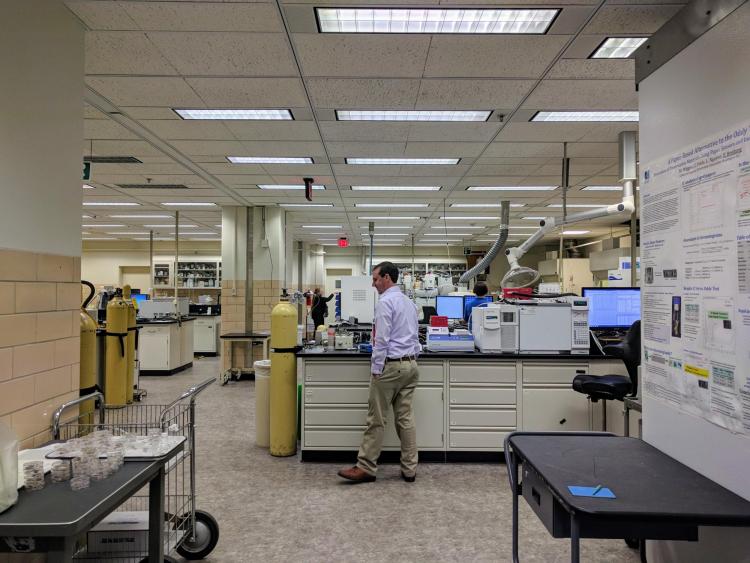The University of Colorado Boulder Libraries are participating in a grant program through the Library of Congress (LOC) that is bringing together five academic libraries to compare the physical condition of similar books retained and preserved at institutions across the country.

A guide to Oddy testing hangs on the wall of a LOC lab. The lab is part of the Preservation Research and Testing Division at the LOC.
The data obtained through “Assessing the Physical Condition of the National Collection,” funded by a Mellon Foundation Grant, will provide data to objectively assess the condition of books held in the United States through in-depth scientific analysis on a representative sample.
This research study is considered a prerequisite for developing a national plan that will ensure that books retained and preserved in shared print programs have the best physical properties for long-term preservation.
Hillary Morgan, conservator in Special Collections, Archives and Preservation attended the project kickoff meeting at the LOC earlier this week. She said the meeting provided an overview of the project and the timeline for the next 40 months.
“CU will send the first approximately 85 books for testing within the next few months,” said Morgan. “They will be tested and sent back within 2 months and then we will send the next batch of 85 until 2022. The LOC hopes to test 500 books from each partner institution and the results will be released in 2022.”

Partners will take turns sending volumes for testing, but each round will consist of the same titles. Preservation researchers from LOC are likely to send quarterly updates on the testing and they are expected to conduct a site visit to CU Boulder before 2022.
The volumes sent will be chosen at random from a list of titles that all participating institutions hold in their collections that were published between 1840-1940.
“This date range was chosen in part because historically this covers the period of intense transition to wood pulp papers for books,” she said. “The list of books will be randomly generated to avoid selection bias, so should cover any genre”
When the LOC receives University Libraries books, the research library will first create photographic documentation, Morgan explained. Then scientific testing will be conducted on a material sample of the paper from each book, in order to gather data on their current physical condition. A strip of 10mm x 100mm will be removed from the fore-edge of a page near the back of the book. This single strip will be enough material for all physical tests performed.
The main tests carried out on the material from the sample strip are: Size Exclusion Chromatography, Ultraviolet/Visible Spectroscopy, pH (acidity) testing, Zero-Span Tensile Test, and Infrared Spectroscopy.
Along with the physical testing, we will also be sending along environmental data on the storage of each book in order to get a better sense of its life with CU and how this may correlate to the physical data from the books.
Morgan said the project will be an interdepartmental effort.
“This will be a project where Preservation will be working closely with the mailroom staff as well as Circulation and possibly others in identifying, collecting, shipping and reshelving all items needed for testing,” she said.
University Libraries is expected to submit its first volumes to Washington, D.C. this summer.
